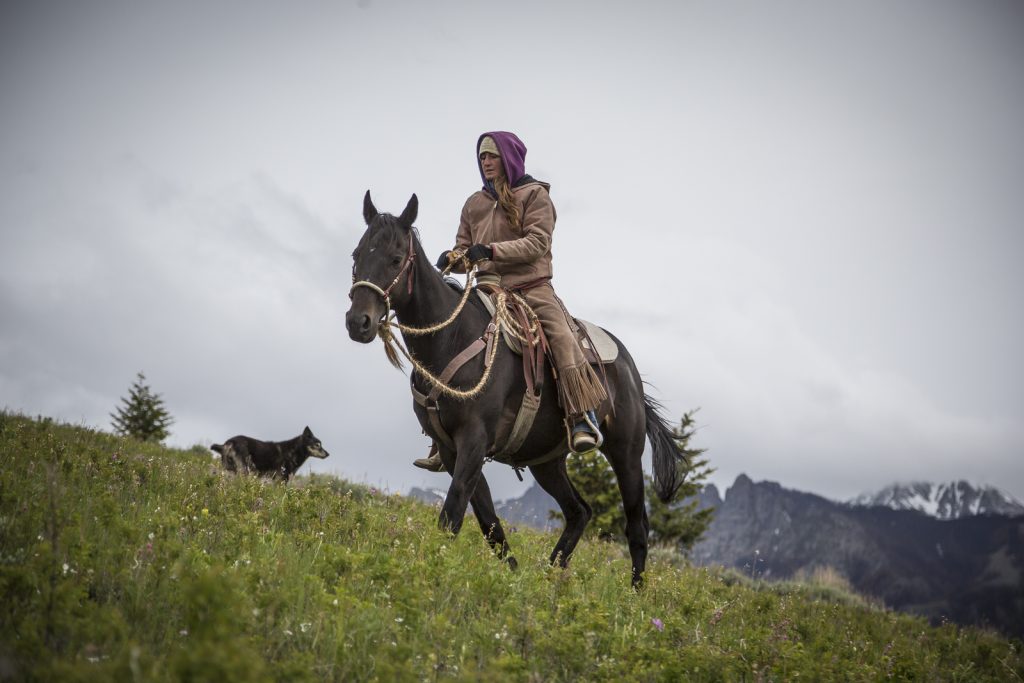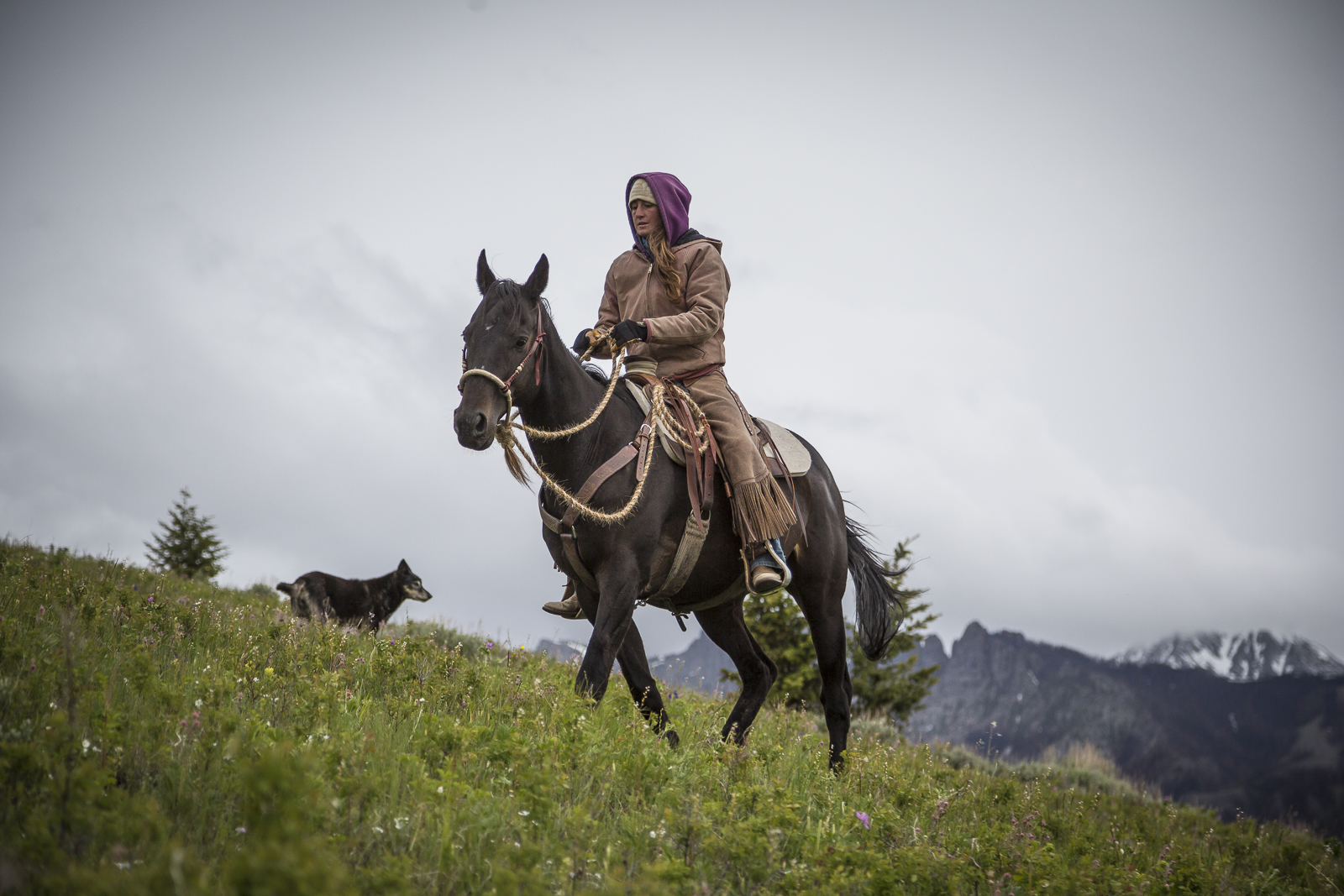Herding to reduce depredation

Hilary and Andrew Anderson manage cattle and range using a combination of progressive range management practices, electric fencing, low-stress range riding and herding in southeast Montana. By the mid-2000s, they were incorporating holistic resource management principles and predator dynamics into their management.
As Hilary Anderson explains, “As hunters, wolves are exceptional at exploiting weakness in their prey, which allows them to make quick and effective decisions on the merit of continuing a hunt. Hunting success is largely based on both the wolves’ ability to exploit vulnerability and their ability to get their prey on the run. Since prey animals are more dangerous to wolves when standing their ground, wolves work hard to get their prey running. If a group of bison, elk or cattle see wolves coming, they can stand their ground and even run off the predator.”
“All our wolf depredations in recent years were in pastures where cattle were scattered, as opposed to a herd that stood its ground.”
Hilary Anderson
The Andersons have noticed that the benefits of herd behavior in wild ungulates applies to cattle as well. “All our wolf depredations in recent years were in pastures where cattle were scattered, as opposed to a herd that stood its ground,” Anderson noted.
While they now experience no losses in their herded first-calf heifers, nearby herds with scattered cattle continue to experience predation. Once cattle relearn the strength and safety of the herd, groups of cattle approached by one or two wolves will stand their ground. In contrast, a lone cow, calf or horse approached by one or two wolves will often run; the wolves then give chase and may attack.
In addition, animals in a group benefit from many eyes watching for danger. Each individual can spend less time watching and more time feeding, which results in less stress and better weight gains. A bunched herd occupies less space, and so is less likely to encounter hunting wolves. Even when found, the herd is less vulnerable due to safety in numbers. Once cattle become accustomed to remaining in a group, efficiency increases for riders as well—they can more quickly find their cattle each day, more easily move the herd to new forage, identify and doctor sick cattle and find carcasses relatively soon after death.
This piece is excerpted from Reducing Conflict with Grizzly Bears, Wolves and Elk: A western landowners’ guide. Download it here.
Join WLA to stay up to date on the most important news and policy for land stewards.
Become a member for free today and we will send you the news and policy developments critical to the economic and ecological health of working lands.
WLA works on behalf of landowners and practitioners throughout the West. We will never share your contact information with anyone.
©2025 Western Landowners Alliance • PO BOX 27798, Denver, CO 80227 • 505.466.1495
Western Landowners Alliance is a 501 (c)(3) non-profit recognized by the IRS.
Tax ID: 46-1346488
